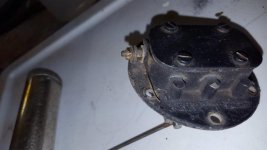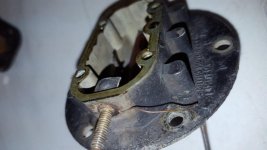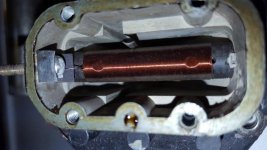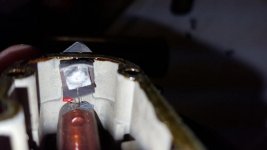Hi Dale,
Keep in mind that the sending unit needs to be grounded. Since the tank is isolated from the grounded frame with non-conductive material under its mounting straps, the ground is provided to the tank/sending unit by the metal fuel line connected to the fuel pump. If an inline filter is installed in front of the pump (between the tank and pump), the solid metal fuel line is often severed and the rubber tubing mounting the filter. In this situation, the ground is lost and many have installed a ground wire between the sending unit and boot ground location to recover this needed grounding.
If this is your situation, I don't think a bare grounding wire would have been used so close to the connector and it is more likely that the bare wire lost its insulation when being severed during removal. However, if this is a grounding wire, as Doug L mentioned, why would wouldn't they have placed the ground wire under a convenient cleaned cover screw?
All in all, the only way to verify this to be a separate grounding wire is to remove the cover and see how it is attached. As you have mentioned, it could be part of the coil winding wire, but if so and the top was not removed prior, how did it get to the outside?
Ray(64BJ8P1)

 Hi Guest!
Hi Guest!

 smilie in place of the real @
smilie in place of the real @
 Pretty Please - add it to our Events forum(s) and add to the calendar! >>
Pretty Please - add it to our Events forum(s) and add to the calendar! >> 




